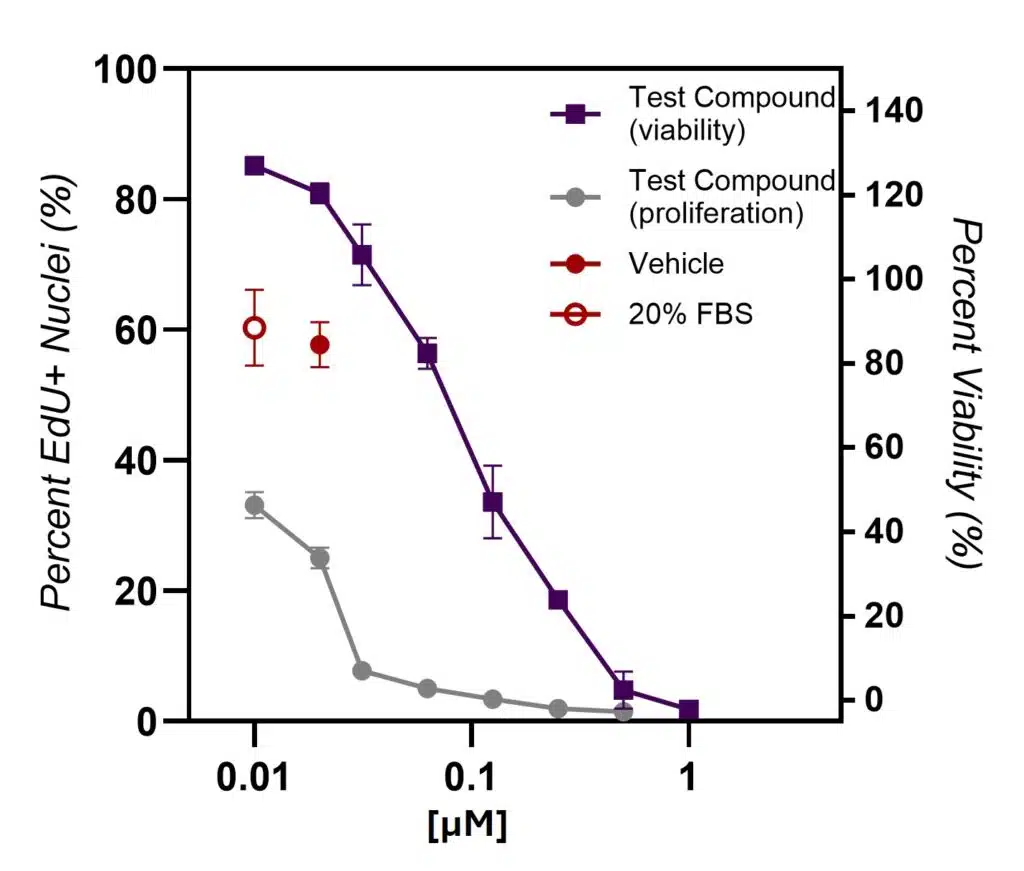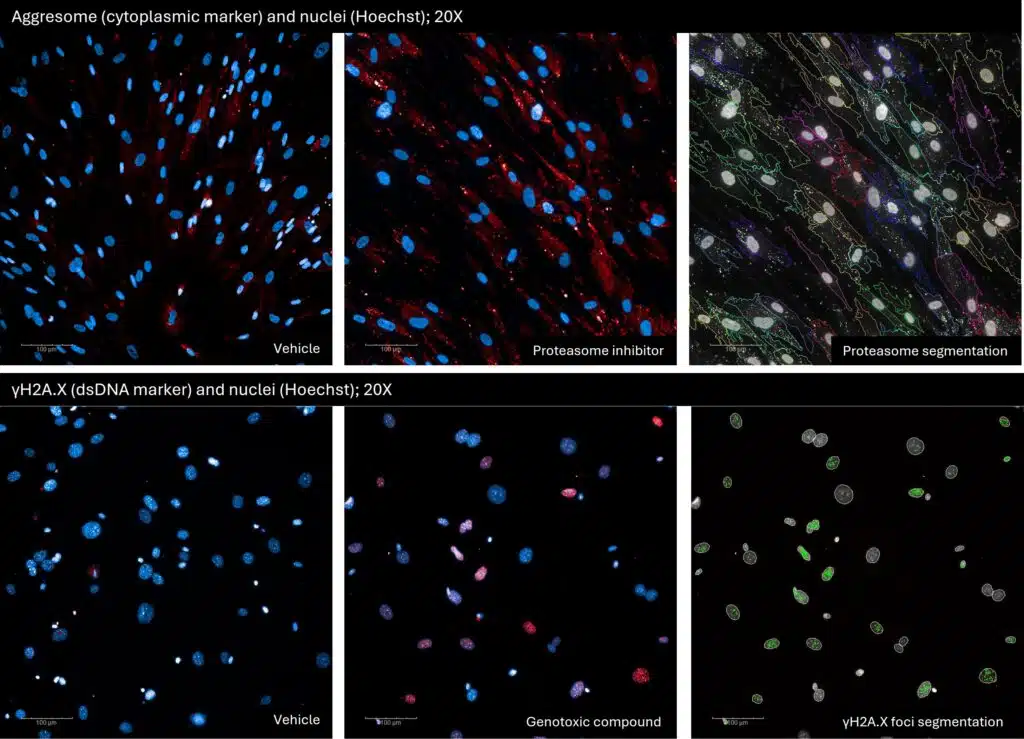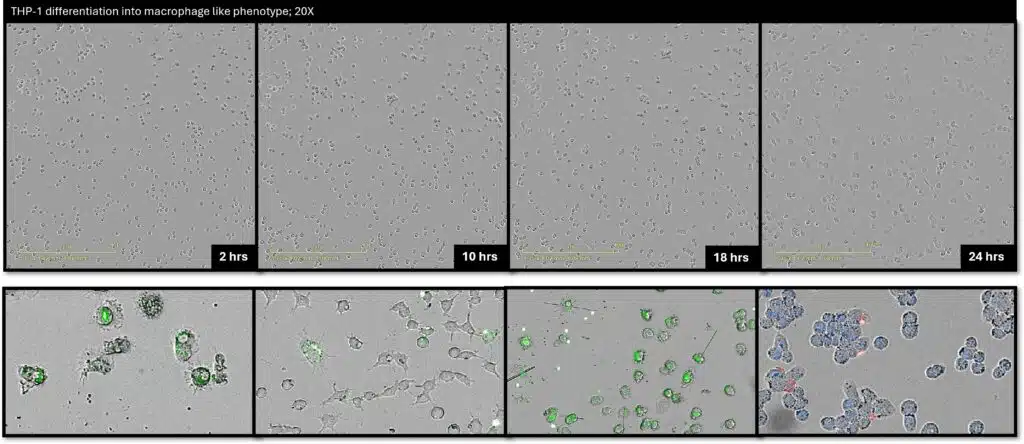Cell-Based Assay Packages

Ichor’s cell-based assay packages deliver actionable insights by multiplexing key readouts in a single phase. Define working concentration ranges, uncover early mechanistic effects, and confirm activity in target-relevant cell populations before advancing to in vivo studies.
Applications We Support
Core Cell Response
Track proliferation, viability, and apoptosis kinetically in a single well to assess compound impact on cell growth and survival.
General Metabolic Profile
Complement your compound characterization by detecting mitochondrial dysfunction, ATP depletion, or glycolytic shifts that signal metabolic stress.
Stress Pathway Activations
Assess activation of damage pathways across oxidative (ROS), proteotoxic (proteasomes and ER), and genotoxic (DNA) stress using multimodal assays with robust, reproducible controls.
Leverage the Right Tools for Deeper Insight
The IncuCyte S3 is a workhorse of Ichor’s cell-based workflows, enabling label-free or fluorescent live-cell imaging for continuous, non-invasive monitoring of cellular behavior and treatment response.
SpectraMax i3 enables diverse molecular readouts, supporting absorbance, fluorescence, and luminescence assays as a versatile core instrument for endpoint quantification in Ichor’s assay workflows.
The Operetta CLS is our in-house high-content confocal imaging system, offering nuanced single-cell resolution that complements IncuCyte’s kinetic data with detailed, endpoint quantification and spatial analysis.
QuantStudio supports gene-level insight within Ichor’s broader assay framework, linking transcriptional changes to protein expression and whole-cell phenotypes for a comprehensive view of compound response.
Combine Complementary Readouts for Biologically Meaningful Data
Biology is complex—especially when drug responses target specific aspects of cellular behavior. Multiplexing enables the simultaneous assessment of proliferation, apoptosis, and morphology in a single well, reducing variability and preserving biological context. By combining compatible labels and orthogonal detection methods, our workflows deliver richer, more meaningful insights with greater efficiency.

Live-cell Imaging for Kinetic Response Tracking
Kinetic data from apoptosis

Using Incucyte live-cell imaging, we continuously monitor growth, death, and morphological changes as they occur. This kinetic data reveals the timing and dynamics of cellular responses, helping inform optimal timepoints for high-content imaging and molecular assays.
Kinetic data from apoptosis ROS

Reactive oxygen species are often the first measurable signal of compound-induced stress. Kinetic ROS profiling reveals early oxidative responses that may precede proteotoxic events like aggresome formation and even DNA damage. This temporal context helps interpret downstream phenotypes more confidently.
Capabilities and Services Summary
Frequently Asked Questions
Yes, you can speak to our scientists to create a package tailored to your therapeutic mechanism, cell model, or readout preferences.
We have over 100 cell lines and types available for your experiments including primary and cancer human and murine cell lines.
We use kinetic live-cell imaging to guide timing decisions for high-content imaging, flow cytometry, or molecular analyses.
We deliver both. In addition to raw and processed data, we offer biological interpretation aligned with your study objectives.


